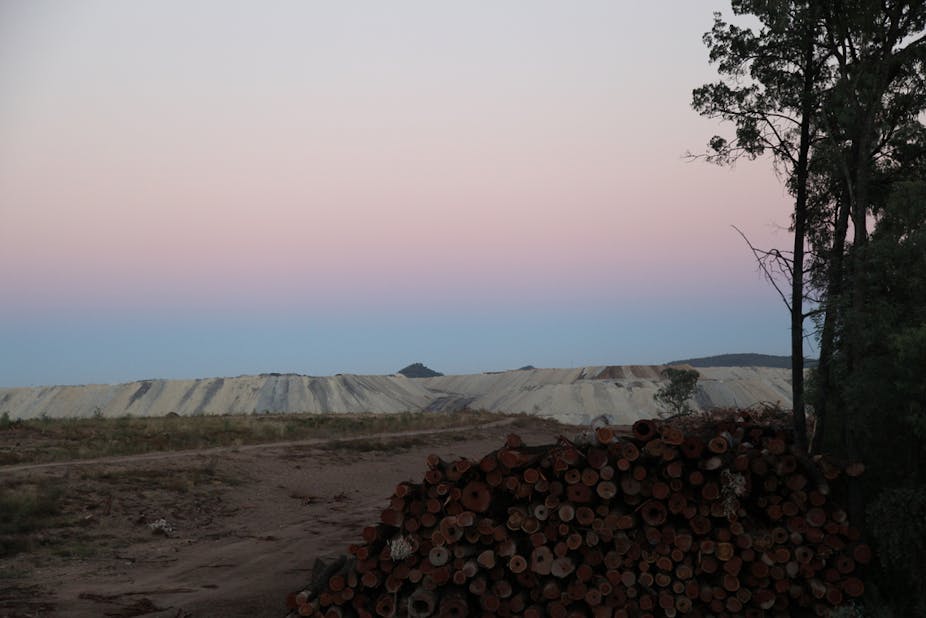Across Australia, landholders are signing conservation agreements or covenants to protect biodiversity on their property. These agreements, offered by state governments, create private protected areas that commonly bind future landholders to protect the property’s biodiversity, ensuring the long-term survival of plant and animal communities.
It seems like a good deal: a private protected area comes at little to no cost to the government and offers protection to biodiversity that might not otherwise have been protected.
Unfortunately there’s a catch. The government does not exempt these private protected areas from mining activities. Rather, in all states of Australia, the government can still give miners permits to explore and extract in these private protected areas.
How protected is protected?
Private protected areas can be created on privately-held properties when the landholder signs a conservation agreement or conservation covenant with the state government. Conservation covenants define the limitations, conditions or restrictions on the use of that land for both the current and future landholders of the property.
Conservation covenants are becoming a popular conservation mechanism in Australia to complement the public protected area system. Organisations like Bush Heritage and the Australian Wildlife Conservancy are built on these covenants. The Queensland Government has committed to add 12 million hectares of land to the reserve system by 2020. Only one-third is being added to the national parks system; the remaining eight million hectares will come from other land including Nature Refuges, a type of covenant.
Covenants are binding. They restrict not only how the current landholders uses the land, but how future landholders use it too. So you might think private protected areas are secure mechanisms for long-term biodiversity protection. Yet, in all states of Australia, conservation covenants are not exempt from mining activities. Legal rights to the topsoil and to minerals below the soil are held by different people; because of this, the security of private protected areas is not a given.
Let’s say the landholder signs a covenant and thereby restricts their topsoil rights to conserve the biodiversity of the property. In this situation the government can still exercise their mineral rights. If the government does exercise their mineral rights, they create an inequitable distribution of the costs and benefits. The landholder pays to maintain biodiversity on behalf of the government and community. But the landholder does not personally derive any ongoing benefits of mineral extraction; the government and third parties get all the benefit.
Governments need to choose: mining or conservation
From a conservation perspective, the ecological benefits of the covenant are lessened or negated once there is mining on the land. From a social perspective, landholders might have a reduced willingness to place a covenant on their property in the future if they know it could be threatened by mining. A conservation covenant will only be equitable so long as the landholder and the government both choose to restrict their use rights in favour of conservation over extraction.
The contradictions in government’s conservation and mining policies are becoming clear. This is particularly true in Queensland, where there is a push to both increase mining development and expand the Nature Refuge program.
In Queensland, 149 of the 379 existing Nature Refuges have mineral exploration permits within their boundaries. Notably, ~70% of those exploration permits were approved after the Nature Refuge was gazetted: the Queensland Government knew about the properties’ conservation value and intended use. Waratah Coal’s proposed Galilee (China First) Coal Project would put a “mega” mine on Bimblebox Nature Refuge, an 8,000 ha private protected area gazetted in 2003. If the mine was approved, it would significantly impact the natural values the area was set up to protect.
Can everyone win?
Given Australia is in the midst of a mining boom, what is the likely future of our private protected areas? To protect the legacy of these programs and make sure landholders still want to place covenants on their property, we need to reform the covenant process. Reforms would need to redress potential use conflicts at the start of the process and assure the landholder that their commitment to a covenant is secure.
A possible solution to this problem is to mirror the process used for national parks. In Queensland, for example, the government resolves any conflicting interests in the property at the start of the process so that once the park has been declared its conservation status is secure. If this model was followed, existing interests in the property would be resolved before the conservation covenant was signed. The area would be given temporary conservation status while mineral exploration or extraction permit conflicts are resolved.
Without reform and a stronger commitment from the government to ensure the integrity of conservation covenants, it is easy to envision a future in which the benefits of conservation covenants, and the efforts of private landholders, are eroded by mining interests.

